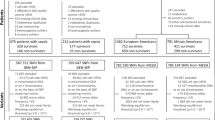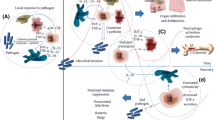Abstract
Sapru et al. show in this issue of Critical Care that variants of thrombomodulin and the endothelial protein C receptor, but not protein C, are associated with mortality and organ dysfunction (ventilation-free and organ failure-free days) in ARDS. Hundreds of gene variants have been found prognostic in sepsis. However, none of these prognostic genomic biomarkers are used clinically. Predictive biomarker discovery (pharmacogenomics) usually follows a candidate gene approach, utilizing knowledge of drug pathways. Pharmacogenomics could be applied to enhance efficacy and safety of drugs used for treatment of sepsis (e.g., norepinephrine, epinephrine, vasopressin, and corticosteroids). Pharmacogenomics can enhance drug development in sepsis, which is very important because there is no approved drug for sepsis. Pharmacogenomics biomarkers must pass three milestones: scientific, regulatory, and commercial. Huge challenges remain but great opportunities for pharmacogenomics of sepsis are on the horizon.
Similar content being viewed by others
This issue of Critical Care presents a novel human genomics study showing that variants of thrombomodulin (TM) and the endothelial protein C receptor (EPCR), but not protein C, are associated with mortality and organ dysfunction (ventilation-free and organ failure-free days) in ARDS—that is, they are prognostic biomarkers [1]. Strengths include the cohort, gene, and variant selections, Hardy–Weinberg equilibrium, correlation of variants with plasma protein levels, correction for multiple comparisons, a haplotype model, a multivariant approach, and a priori sample size calculation. A relative weakness was the reliance on literature for biological plausibility of the “significant” variants. These innovative insights could lead to “predictive biomarkers” for response to recombinant human TM and even activated protein C (APC) in sepsis.
Genomics and pharmacogenomics (PGx) are pivotal to fields such as cancer and cardiovascular medicine. In cancer, PGx biomarker(s) include trastuzumab (Herceptin, HER2), irenotecan (UGT1A1*28), azothioprine and 6-mercaptopurine (TPMT), capecitabine (dihydropyrimidine dehydrogenase), and cetuximab/panitumumab (KRAS)—these drugs are very frequently given according to the specific PGx biomarker. In cardiovascular medicine, clopidogrel (CYP2C19) and warfarin (VKORC1) are well-documented PGx biomarkers that indicate altered efficacy and safety respectively. PGx biomarkers are used increasingly in clinical practice.
Sepsis has gone through 15 years of discovery of many genomic biomarkers [2, 3]. A PubMed search for “sepsis and polymorphism” yields 1199 publications. Let us define some terminology: a prognostic biomarker identifies prognosis (e.g., increased risk of death); a diagnostic biomarker diagnoses condition (e.g., sepsis diagnostic); and a predictive biomarker (companion diagnostic) uses genomics to define response to a drug (see http://www.fda.gov/MedicalDevices/ProductsandMedicalProcedures/InVitroDiagnostics/ucm407297.htm). Over 100 drugs have approved predictive biomarkers on the drug label (http://www.fda.gov/drugs/scienceresearch/researchareas/pharmacogenetics/ucm083378.htm)!
About one quarter of the human genome changes expression in sepsis [4], so it is not surprising that hundreds of variants are described in sepsis [3]. However, none of these prognostic genomic biomarkers are used clinically, probably because of lack of clinical utility (i.e., the test result would not change a clinician’s behavior). Nonetheless, genomics of sepsis studies have identified key pathways associated with specific organ dysfunctions and mortality, and have identified drug targets in sepsis (e.g., proprotein convertase subtilisin/kexin type 9 (PCSK9) [5]). Variants of PCSK9 were associated with outcomes of sepsis, and post treatment of cecal ligation and perforation model mice with PCSK9 inhibitors decreased inflammation, cardiovascular dysfunction, and mortality; thus, PCSK9 inhibition could be effective in sepsis [5]. This example could be expanded to other genes and novel drugs.
Predictive biomarker discovery often follows a candidate gene approach, utilizing knowledge of drug receptors, transporters, enzymes that metabolize a drug, and drug target pathways. Predictive biomarkers often have high clinical utility. FDA-approved drug labels have a hierarchy of recommendations for companion diagnostics: (1) for information (i.e., descriptions of published studies of PGx related to the drug); (2) recommended—physicians are encouraged to measure the biomarker; and (3) required—physicians MUST use the companion diagnostic to prescribe the drug. The required companion diagnostic relates to trastuzumab: HER2 must test positive for identifying good responders to order trastuzumab.
The PGx biomarker discovery pathway is arduous, time-consuming, and expensive. A successful PGx biomarker must pass three milestones: scientific, regulatory, and commercial. Scientific steps include: a decision regarding a nonhypothesis-driven (genome-wide) vs a candidate gene approach, RCTs, significant drug/PGx biomarker interaction, validation often in a separate RCT, and validation of a rapid turnaround time (TAT) kit in real time. The regulatory node includes many submissions and visits to regulators before and after each study. Regulators have approved PGx biomarkers in cancer that were assessed at the end of pivotal RCTs provided that the biomarker hypothesis was logged before locking the RCT dataset. Thus, selection of PGx biomarkers may occur in parallel with RCT execution. Finally, the commercial node includes costs of kits, reimbursement methods and amounts, FDA-approved and EMEA-approved manufacturing, and distribution of a rapid TAT kit (and sometimes a unique “box” for measuring the biomarker) to hospitals (laboratories and/or ICUs or EDs).
PGx could be applied to enhance efficacy and safety of drugs in use for sepsis and septic shock including norepinephrine, epinephrine, vasopressin, and corticosteroids (CS) (Table 1); known genomic variants intersect with these drugs. Genomics of the CS and vasopressin (AVP) axes have been well studied for prediction of response to CS (and less so vasopressin), because CS and AVP variants are widely studied in many conditions and because CS are used in so many conditions (Table 1).
PGx can also enhance drug development, very important since there is no approved drug for sepsis. PGx could increase chances of drug development success in sepsis; that is, precision medicine to enrich the heterogeneous sepsis cohorts [2, 6]. Potential predictive biomarkers/companion diagnostics could be used with recombinant human TM, selepressin, angiotensin II, PCSK9 inhibitor, IL-7, and esmolol (Table 1). Studies of PGx of ACE inhibitors in cardiovascular disease and IL-7 in cancer could inform angiotensin II and IL-7 PGx in sepsis (Table 1). Several drugs used clinically in sepsis have proven companion diagnostics (Table 1).
Finally, PGx could resurrect “dead” drugs by increasing efficacy. APC could be resurrected by using genetic variants such as those discovered by Sapru et al. [1] that might mark patients who have an enhanced response to APC to enrich patient selection in a future RCT (Table 1).
In summary, there remain huge challenges but great opportunities for genomics, and I think more importantly for PGx of sepsis. We are close—but yet so far because there are many complex steps and milestones to bring a novel PGx biomarker to septic patients and their caregivers. I remain very optimistic that researchers such as Sapru et al. [1] and other scientists in the field are up to the challenge!
Abbreviations
APC, activated protein C; CS, corticosteroids; EPCR, endothelial protein C receptor; PCSK9, proprotein convertase subtilisin/kexin type 9; PGx, pharmacogenomics; RCT, randomized controlled trial; TAT, turnaround time; TM, thrombomodulin
References
Sapru A, Liu KD, Wiemels J, et al. Association of common genetic variation in the protein C pathway genes with clinical outcomes in acute respiratory distress syndrome. Crit Care. 2016;20:151.
Vincent JL. Individual gene expression and personalised medicine in sepsis. Lancet Respir Med. 2016;4(4):242–43.
Christaki E, Giamarellos-Bourboulis EJ. The beginning of personalized medicine in sepsis: small steps to a bright future. Clin Genet. 2014;86(1):56–61.
Calvano SE, Xiao W, Richards DR, et al. A network-based analysis of systemic inflammation in humans. Nature. 2005;437(7061):1032–7.
Walley KR, Thain KR, Russell JA, et al. PCSK9 is a critical regulator of the innate immune response and septic shock outcome. Sci Transl Med. 2014;6(258):258ra143.
Mebazaa A, Laterre PF, Russell JA, et al. Designing phase 3 sepsis trials: application of learned experiences from critical care trials in acute heart failure. J Int Care. 2016;4:24.
Nakada TA, Russell JA, Boyd JH, et al. beta2-Adrenergic receptor gene polymorphism is associated with mortality in septic shock. Am J Respir Crit Care Med. 2010;181(2):143–9.
Annane D, Vignon P, Renault A, et al. Norepinephrine plus dobutamine versus epinephrine alone for management of septic shock: a randomised trial. Lancet. 2007;370(9588):676–84.
Nakada TA, Russell JA, Wellman H, et al. Leucyl/cystinyl aminopeptidase gene variants in septic shock. Chest. 2011;139(5):1042–9.
Russell JA, Walley KR, Singer J, et al. Vasopressin versus norepinephrine infusion in patients with septic shock. N Engl J Med. 2008;358(9):877–87.
Lasker MV, Leventhal SM, Lim D, et al. Hyperactive human glucocorticoid receptor isoforms and their implications for the stress response. Shock. 2015;43(3):228–32.
Sprung CL, Annane D, Keh D, et al. Hydrocortisone therapy for patients with septic shock. N Engl J Med. 2008;358(2):111–24.
Nakada TA, Russell JA, Boyd JH, et al. Association of angiotensin II type 1 receptor-associated protein gene polymorphism with increased mortality in septic shock. Crit Care Med. 2011;39(7):1641–8.
Walley KR, Russell JA. Protein C −1641 AA is associated with decreased survival and more organ dysfunction in severe sepsis. Crit Care Med. 2007;35(1):12–7.
Ranieri VM, Thompson BT, Barie PS, et al. Drotrecogin alfa (activated) in adults with septic shock. N Engl J Med. 2012;366(22):2055–64.
Authors’ contributions
JAR conceived, designed, researched, and wrote the submission. The author read and approved the final manuscript.
Competing interests
JAR reports patents owned by the University of British Columbia (UBC) that are related to PCSK9 inhibitor(s) and sepsis and related to the use of vasopressin in septic shock. JAR is an inventor on these patents. JAR is a founder, director, and shareholder in Cyon Therapeutics Inc. (developing a sepsis therapy); has share options in Leading Biosciences Inc.; and is a shareholder in Molecular You Corp. JAR reports receiving consulting fees from Cubist Pharmaceuticals (now owned by Merck, formerly was Trius Pharmaceuticals; developing antibiotics), Leading Biosciences (developing a sepsis therapeutic), Ferring Pharmaceuticals (manufacturing vasopressin and developing selepressin), Grifols (selling albumin), and La Jolla Pharmaceuticals (developing angiotensin II); chairs the DSMB of a trial of angiotensin II), CytoVale Inc. (developing a sepsis diagnostic), and Asahi Kesai Pharmaceuticals of America (AKPA; developing recombinant thrombomodulin); and reports having received grant support from Ferring Pharmaceuticals and from Grifols that was provided to and administered by UBC.
Author information
Authors and Affiliations
Corresponding author
Additional information
See related research by Sapru et al., https://ccforum.biomedcentral.com/articles/10.1186/s13054-016-1330-5
Rights and permissions
Open Access This article is distributed under the terms of the Creative Commons Attribution 4.0 International License (http://creativecommons.org/licenses/by/4.0/), which permits unrestricted use, distribution, and reproduction in any medium, provided you give appropriate credit to the original author(s) and the source, provide a link to the Creative Commons license, and indicate if changes were made. The Creative Commons Public Domain Dedication waiver (http://creativecommons.org/publicdomain/zero/1.0/) applies to the data made available in this article, unless otherwise stated.
About this article
Cite this article
Russell, J.A. Genomics and pharmacogenomics of sepsis: so close and yet so far. Crit Care 20, 185 (2016). https://doi.org/10.1186/s13054-016-1374-6
Published:
DOI: https://doi.org/10.1186/s13054-016-1374-6




